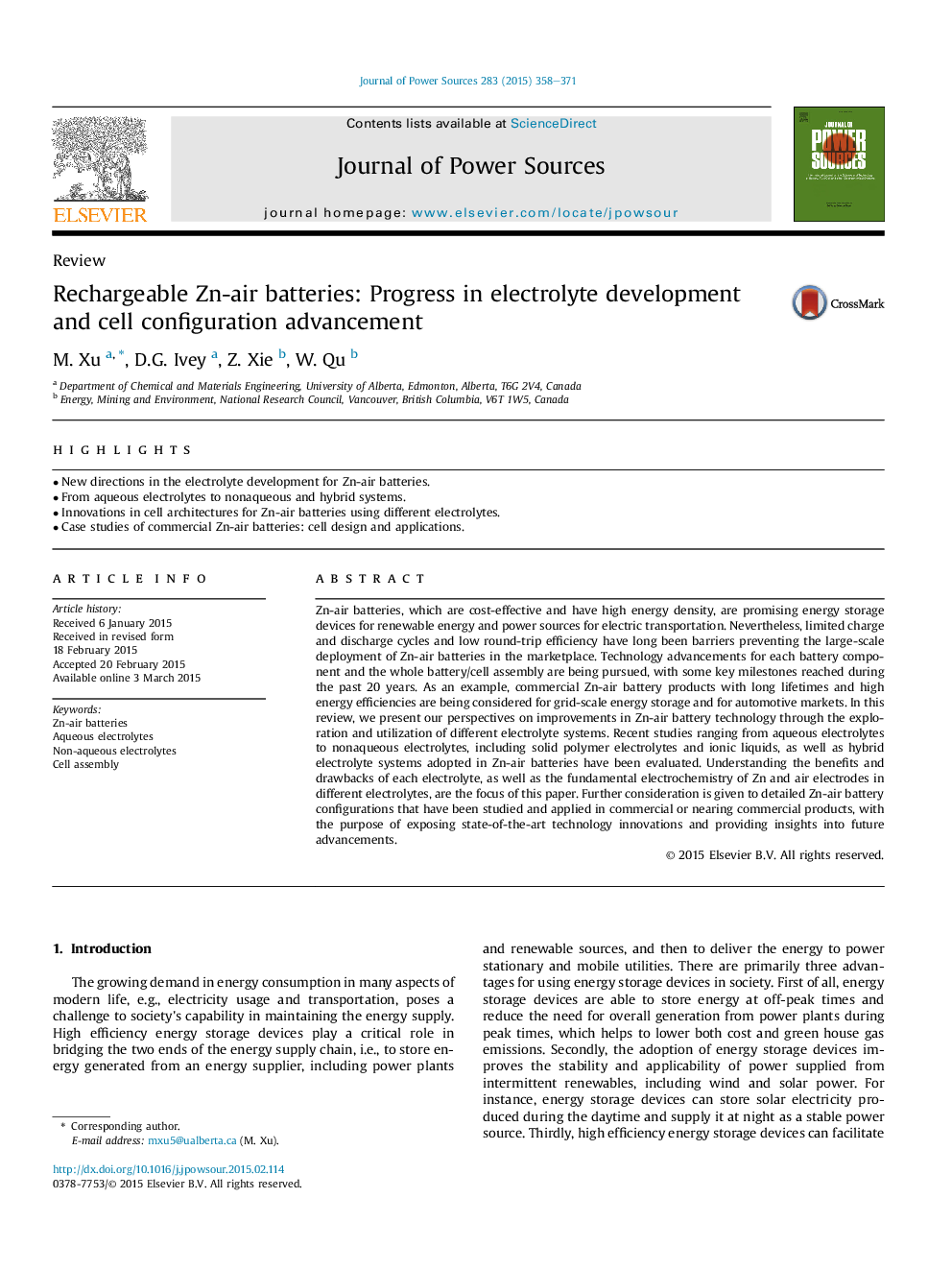| کد مقاله | کد نشریه | سال انتشار | مقاله انگلیسی | نسخه تمام متن |
|---|---|---|---|---|
| 1292833 | 1497949 | 2015 | 14 صفحه PDF | دانلود رایگان |

• New directions in the electrolyte development for Zn-air batteries.
• From aqueous electrolytes to nonaqueous and hybrid systems.
• Innovations in cell architectures for Zn-air batteries using different electrolytes.
• Case studies of commercial Zn-air batteries: cell design and applications.
Zn-air batteries, which are cost-effective and have high energy density, are promising energy storage devices for renewable energy and power sources for electric transportation. Nevertheless, limited charge and discharge cycles and low round-trip efficiency have long been barriers preventing the large-scale deployment of Zn-air batteries in the marketplace. Technology advancements for each battery component and the whole battery/cell assembly are being pursued, with some key milestones reached during the past 20 years. As an example, commercial Zn-air battery products with long lifetimes and high energy efficiencies are being considered for grid-scale energy storage and for automotive markets. In this review, we present our perspectives on improvements in Zn-air battery technology through the exploration and utilization of different electrolyte systems. Recent studies ranging from aqueous electrolytes to nonaqueous electrolytes, including solid polymer electrolytes and ionic liquids, as well as hybrid electrolyte systems adopted in Zn-air batteries have been evaluated. Understanding the benefits and drawbacks of each electrolyte, as well as the fundamental electrochemistry of Zn and air electrodes in different electrolytes, are the focus of this paper. Further consideration is given to detailed Zn-air battery configurations that have been studied and applied in commercial or nearing commercial products, with the purpose of exposing state-of-the-art technology innovations and providing insights into future advancements.
Journal: Journal of Power Sources - Volume 283, 1 June 2015, Pages 358–371